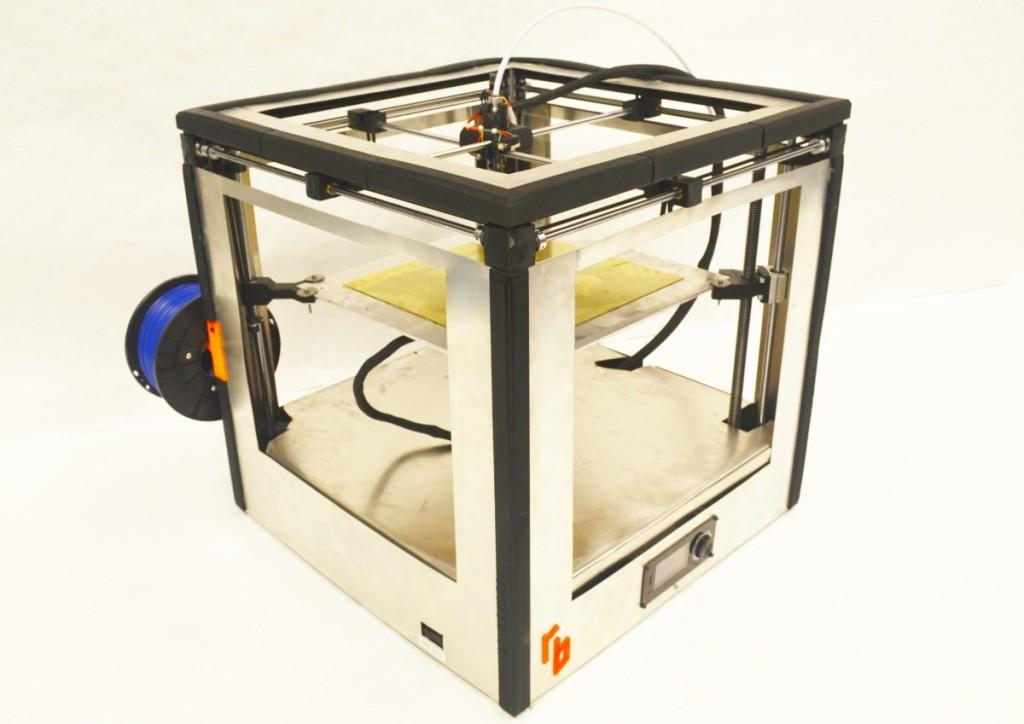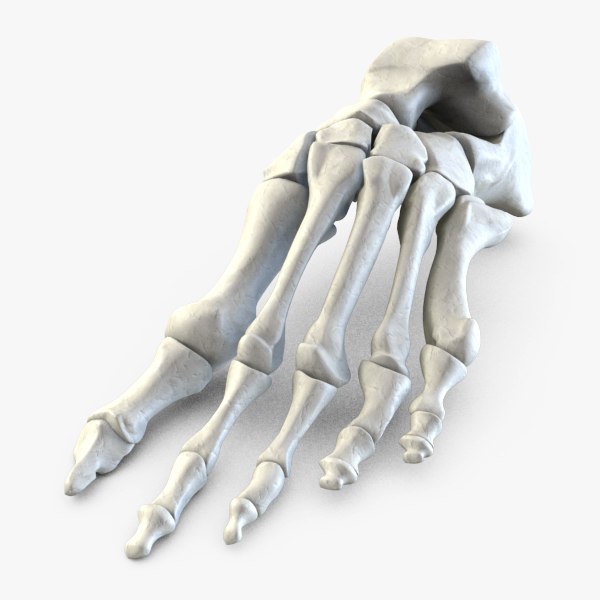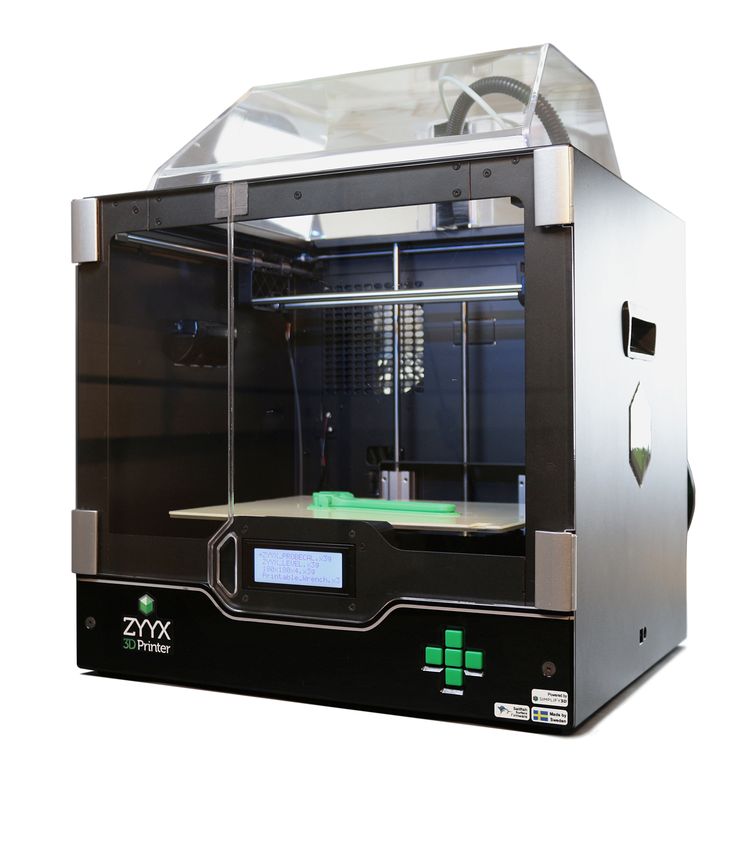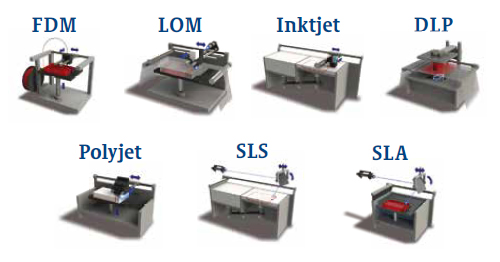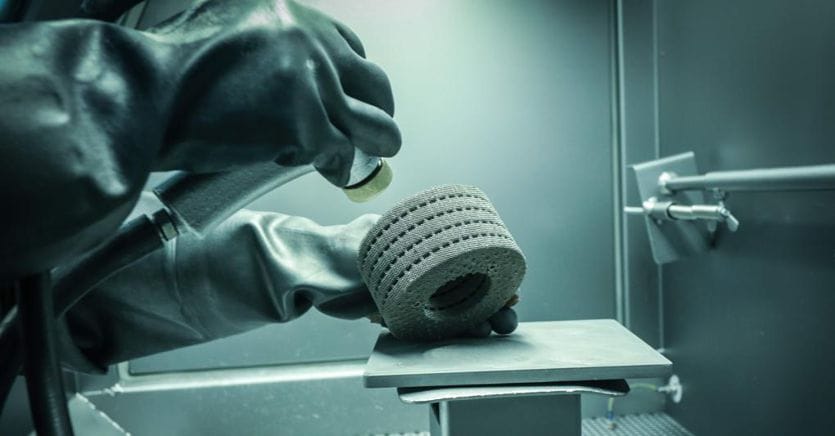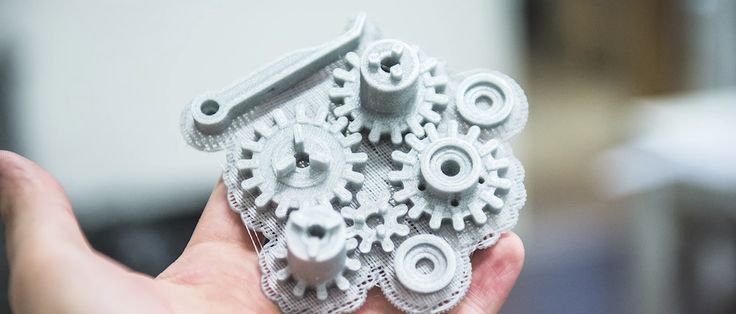Fastest consumer 3d printer
11 Fastest 3D Printers 2023
In the world of 3D printing, speed is of the essence. Using the fastest 3D printers means businesses can churn out products at an impressive rate and allows for greater creativity and flexibility when it comes to design.
However, the classic speed vs quality debate suggests that the faster the 3D print speed is, the lower the print quality.
While this might be true for some, the fastest – and best – 3D printers on the market are optimized for speed and print quality level.
Table of Contents
Desktop 3D Printers vs Industrial 3D Printers
Today’s professional desktop 3D printers are affordable, have decent build volumes, and can be safely used in office environments. These give you unprecedented advantages over your existing traditional manufacturing processes and your current desktop 3D printers.
Professional desktop 3D printers are usually either fused deposition modeling (FDM) 3D printers or those that use resin-based vat polymerization. The latter include stereolithography (SLA), direct light processing (DLP), masked stereolithography (mSLA), and its subcategory lubricant sublayer photocuring (LSPc), each of which uses a programmable light source to selectively cure part layers in a vat of photoreactive resin.
When most people think of industrial 3D printing, they think of powder-bed fusion and metal 3D printing technologies, but this is not always the case. In addition to the advanced technologies, industrial 3D printers also include Fused Deposition Modeling (FDM) and Vat Photopolymerization or Resin 3D printing.
Today’s industrial 3D printing is highly reliable and consistent, have high resolution, can print with engineering-grade materials, offer high-speed printing, have an ecosystem of materials and software supporting the 3D printer, have a large build volume, require little maintenance, and have foolproof safety features.
But which are the fastest printers out of all of these? Let’s take a look.
Fastest Desktop 3D Printers
Professional desktop 3D printers here are compact, affordable, and easy to use. Here are some of the fastest desktop 3D printers currently on the market:
1. Nexa3D XiP
Nexa3D makes ultrafast 3D printers for designers, engineers, and manufacturers who need to develop and create the products of tomorrow. One of Nexa3D’s fastest printers is the Nexa3D XiP high-performance printer.
The XiP combines a compact footprint with a large build volume and fast print speed to deliver high-quality prototypes for any desktop. It’s patented under Nexa3D’s Lubricant Sublayer Photo-curing (LSPc) technology, which has successfully solved the historical speed vs. quality problem. This technology addresses common concerns over usable power, image homogeneity, heat buildup, layer separation, and resin replenishment cycles during the build process.
The Nexa3D XiP printer also has a build time of about 87 minutes, which allows parts to print up to 10 times faster than other leading 3D printers on the market. XiP is also affordable, with printing packages starting at $6295.
XiP is also affordable, with printing packages starting at $6295.
If you are looking for speed, precision, and reliability, the XiP printer is the right choice for you.
Source
Pros:
- Allows users to print at speeds of up to 180 mm per hour.
- Large build volume of 4.8L.
- Provides ultimate flexibility to materials needed.
- Easily upgradeable.
- Easy to operate.
- Open material platform (ability to use with third-party resins).
- Comes with in-built wash packages for post-process.
- Produced from aluminum materials, making it recyclable.
Cons:
- It’s best for professional printing, not hobbyist printers.
Best for:
Prototypes and production-grade applications for engineering, dental, and other industries.
Learn more about the XiP.
2. Anycubic Photon M3 Plus
The Photon M3 Plus is a 3D printer from Anycubic. Its print quality, quick print times, and large build plate size make this 3D printer a solid resin printer option.
The Anycubic Photon M3 Plus is reported to have a print speed of up to 70mm/hour. It’s also capable of printing various materials including specialty and advanced resin materials. Anycubic Photon M3 Plus costs $700, and its technical specifications include:
- Exposure screen of 9.25-inch monochrome
- Print size of 245 x 197 x 122 mm
- Printing volume of 5.9 liters.
- The print size of 245 x 197 x 122 mm
- A 40 LED beads parallel matrix light source
- A Laser-engraved aluminum alloy platform
- A 4-point manual machine leveling
Source
Pros:
- Good build quality.
- Large and easy-to-navigate touchscreen.
- Large build plate.
- Relatively simple to set up.
Cons:
- Very noisy fans.
- Photon Workshop crashes often.
- Fumes can be exhausted from the case.
- Not meant for industrial or professional use.
- Manual build plate leveling, which can be time-consuming.

Best for:
Hobbyist 3D printing budgets under $1,000.
3. FLSun QQ-S
FLSun QQ-S is a budget-friendly 3D printer suitable for hobbyists and professionals not requiring fine feature detail and precision with a print speed of 60 mm/s. The QQ-S also features auto-feeding filament, dual z-axis motors, and a larger build volume measuring 255 x 255 x 360 mm.
This 3D printer also has a durable, all-metal frame and a heated bed that can reach temperatures up to 110°C. The QQ-S cost about $339.
Source
Pros:
- Suitable for several professionals and hobbyists looking for a compact option.
- High speed and large build volume.
Cons:
- Unable to create fine feature details or high-quality surface finish.
- Noisy operation.
- Not suitable for large-scale, professional projects.
Best for:
Budget-minded users looking for a large build volume.
4. QIDI Tech X-Pro 3D Printer
QIDI Tech X-Pro 3D Printer has a printing speed of up to 24cc/h and a layer resolution of 0. 1 – 0.4 mm. The X-Pro also features a large build size measuring 230x150x150mm.
1 – 0.4 mm. The X-Pro also features a large build size measuring 230x150x150mm.
The QIDI Tech X-Pro 3D Printer is an FDM 3D printer with a heated aluminum print bed that can reach temperatures up to 110°C. It uses Mac OX, Windows 7, and 8 as its operating system, so software is limited. This 3D printer is priced at around $650.
Source
Pros:
- Low price for the features it offers.
- Large build size for larger projects.
Cons:
- Unable to create fine feature details or high-quality surface finish.
- Limited software compatibility.
- Lacks resin printer features.
Best for:
Hobbyists & engineers who need a fast FDM 3D printer.
5. Original Prusa i3 MK3S+
The Original Prusa i3 MK3S+ is the flagship of Prusa Research’s 3D printer line. It features a fully enclosed frame to protect prints from drafts and dust, as well as a graphical LCD display with easy menu navigation. The Original Prusa i3 MK3S+ costs about $1,099.
The print area of the i3 MK3S+ now measures 9.8 x 8.3 x 8.3 inches – a difference from its predecessors: 9.8 x 8.3 x 7.9 inches. The i3 MK3S+ utilizes PrusaSlicer, the proprietary software suite developed by the company.
Source
Pros:
- Fully enclosed frame to protect prints from drafts and dust.
- Graphical LCD display with easy menu navigation.
Cons:
- When compared to the price, the build volume is small.
- Unable to achieve high-quality surface finish since it’s a filament-based printer.
Best For:
Hobbyists and experienced 3D printer users
Fastest Industrial 3D Printers
Industrial 3D printers are used for large-scale projects and massive production runs. They feature much larger build volumes, higher print quality, and a wider range of materials compatibility compared to desktop 3D printers. Here are some of the fastest industrial 3D printers currently on the market:
1.
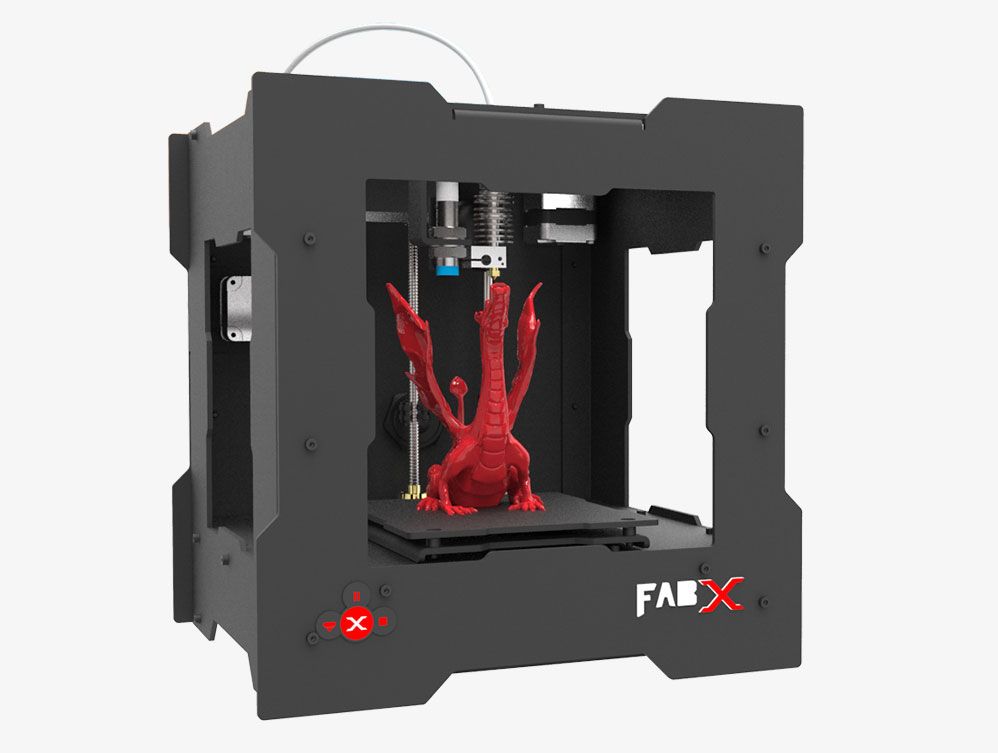 Nexa3D NXE 400Pro
Nexa3D NXE 400ProThe Nexa3D NXE 400Pro is part of the NXE Pro Series of 3D printers known for their light engine and smooth build plate. The NXE 400Pro boasts an unprecedented 17-liter build volume, delivering unmatched speed and throughput without compromising accuracy or repeatability.
The NXE 400Pro industrial 3D printer features patented Lubricant Sublayer Photo-curing (LSPc®) technology, delivering accuracy and tolerances with a superior surface finish by turning SLA 3D printing technology on its head. The pricing for NXE 400Pro starts at $49,995.
Pros:
- Ultrafast photopolymer industrial 3D printer.
- Unmatched 17-liter build volume (274 x 155 x 400 mm).
- Best in its class for print speeds (6.5x faster than other SLA and DLP technology).
- LSPc light engine delivers uniform, high power, and distortion-free image to ensure part-to-part accuracy and uniformity.
- Self-lubricated membrane that prevents delamination forces and enables fast print speeds.

Cons:
- This is also a professional printer (not for hobbyists).
Best for:
Production and on-demand manufacturing and functional prototypes.
Learn about the NXE 400Pro.
2. Nexa3D NXE 200Pro
NXE 200Pro is another advanced 3D printer from Nexa3D’s NXE Pro Series. This printer is also known for its dual laser light engine, smooth build plate, and unparalleled speed and throughput. This printer provides exceptional affordability for designers, engineers, and manufacturers who need fast, accurate, and cost-effective prototyping and manufacturing solutions.
Powered by LSPc technology, the NXE 200Pro’s 200mm z-stroke is perfect for building smaller parts and enabling downstream processes for semi-continuous production. Also, the NXE 200Pro’s Lubricant Sublayer Photo-curing (LSPc®) technology delivers high-resolution prints with a superior surface finish to other SLA and DLP 3D printers on the market.
Delivering cost-effective production capabilities, the NXE 200Pro industrial-grade 3D printer’s industrial hardware with modular components is easy to service and upgrade, providing additional savings over time. NXE 200Pro pricing packages start around $39,995.
NXE 200Pro pricing packages start around $39,995.
Pros:
- Ultrafast photopolymer 3D Printer.
- An unmatched 8.5-liter build volume (275 x 155 x 200 mm).
- Uses Masked Stereolithography (mSLA) technology.
- Prints up to 20 flat models in 30 minutes.
- Its LSPc light engine delivers uniform, high-power, and distortion-free images to ensure part-to-part accuracy and uniformity.
- Validated dental workflows with Keystone resins.
Cons
- It has a slightly smaller build compared to its NXE 400Pro counterpart.
Best for:
Engineering, medical applications, as well as prototyping and production-grade applications.
Learn more about the NXE 200Pro.
3. Nexa3D QLS820
The Nexa3D QLS 820 is another advanced 3D printer from Nexa3D. With the highest part throughput in its class, this thermoplastic 3D printer is a quad laser system that offers unprecedented production capabilities designed with automation and scalability in mind.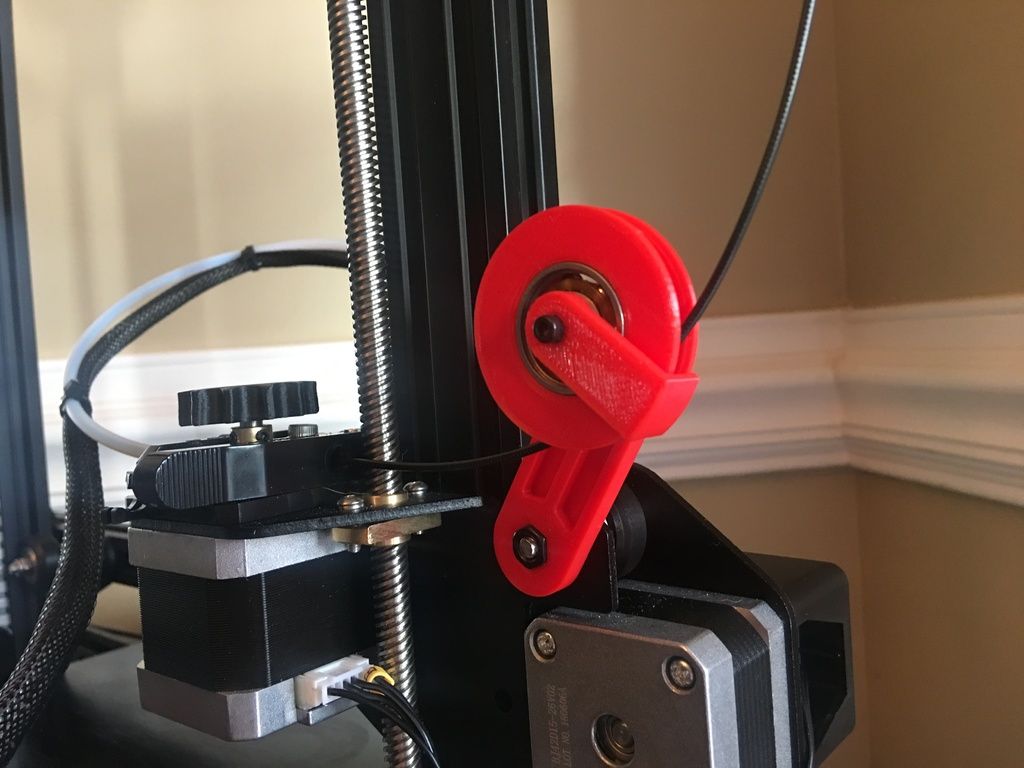 It’s about 60% faster than the existing industry standard – with double the average packing density.
It’s about 60% faster than the existing industry standard – with double the average packing density.
The QLS 820 takes 3D printing to a new level, producing up to four times the throughput of traditional laser sintering 3D printers and other polymer powder bed technologies. QLS 820’s smart automation removes pain points in capacity utilization and downstream labor intensity and can print about 8 liters per hour at a 20% job density rate.
Plus, its wide-use temperature range, open-source platform, and inert processing atmosphere allow for printing various materials, including PA11, PA12, and polypropylene, as well as PA12 composite materials with glass, aluminum, and carbon fiber billed options. glass, aluminum, and fiber-filled options.
Pros:
- Powered by quantum laser sintering which delivers high-throughput, premium production capabilities at 8L per hour at 20% packing density.
- Incredible speed, end-to-end traceability, centralized printer management, and real-time data monitoring.

- Modular Material Processing Station (MMPS) enables safe, powderless, and efficient handling of materials.
- Nexa3D QLS 820 software offers fleet management, print preparation, and real-time printer performance.
Cons:
- Best for very large print volumes, so it may not be a great fit for smaller budgets.
Best for:
High-volume production manufacturing in a variety of materials. Injection mold tolerances for full production capabilities, including high temp thermoplastics like PBT and PA6 materials.
Learn about the QLS 820 3D printer.
4. Phrozen Sonic Mega 8K
Phrozen Sonic Mega 8K has a large build size of 47.5 x 40 x 68 cm and a Z-Axis resolution of 1 micron, making it suitable for large-scale projects such as figurines, statues, and large prototypes.
The Sonic Mega 8K is equipped with energy-efficient LED lighting and offers a wide range of temperatures, so it can print with high-temperature materials such as ABS, ASA, and Polycarbonate.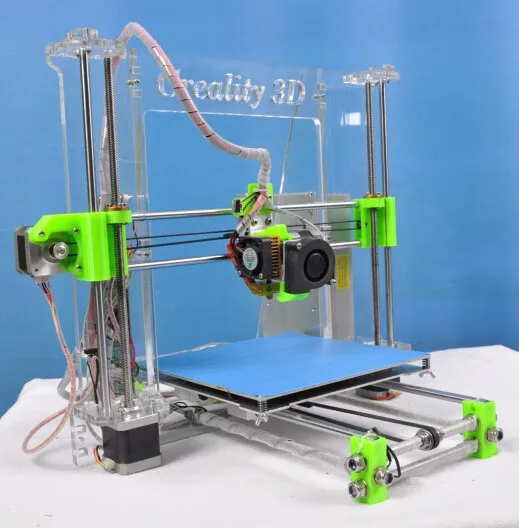 The printer also features an automatic bed leveling system that helps to ensure a smooth printing surface.
The printer also features an automatic bed leveling system that helps to ensure a smooth printing surface.
Phrozen Sonic Mega 8K costs around $2,200, and technical specifications include:
- Phrozen operating system
- A 5-inch large touch panel
- Design: Technology Resin 3D Printer – LCD Type
- A 405 nm ParaLED Matrix 3.0 light source
- A printing speed of 70 mm/hr
Source
Pros:
- Large build size for large-scale projects.
- An automatic bed leveling system provides a smooth printing surface.
Cons:
- Bigger build volume but is less useful for large prints.
Best for:
Large-scale projects requiring maximum speed, accuracy, and durability.
5. HP Jet Fusion 5200
HP Jet Fusion 5200 is a mid-range 3D printer with build volume of 380 x 284 x 380 mm and print speed of 4115 cm3/hr and an accuracy level up to +/- 0.02 mm. It was designed for manufacturing applications requiring large quantities of complex parts or demanding functionalities.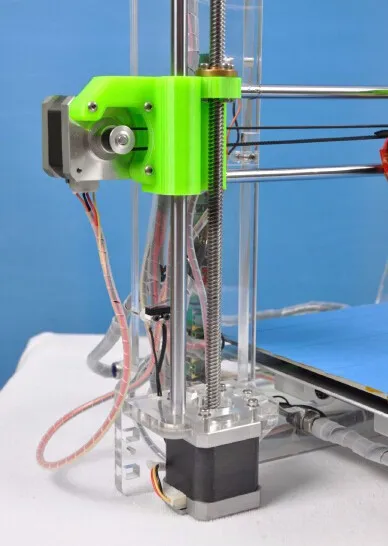
The HP Jet Fusion 5200 uses Multi Jet Fusion technology to create 3D prints with superior quality, accuracy, and reliability. Sources say the HP Jet Fusion 5200 cost around $350,000-$500,000, and its technical specifications include a 24-inch touchscreen display with HP Jet Fusion 5200 operating system and multi-jet fusion technology.
Source
Pros:
- High throughput for large quantities of parts.
- Removable build unit.
- Good quality and accuracy up to +/- 0.02 mm.
Cons:
- Costly consumables add to operational costs.
- Throughput limitations are given lower packing density.
Best for:
Low to mid-volume part production.
6. Wasp 2040 Pro Turbo
Wasp 2040 Pro Turbo has a build volume of 20 x 40 cm, making it suitable for large-scale projects. It offers a printing speed of 110 mm/s and a layer resolution of 0.1 to 0.4 mm.
The Wasp 2040 Pro Turbo has dual extruders that allow quick switching between materials during print. The printer also features an automatic bed leveling system for a smooth printing surface and comes with a heated aluminum print bed that can reach temperatures of up to 60°C. The Wasp 2040 Pro Turbo costs around €2.844,00.
The printer also features an automatic bed leveling system for a smooth printing surface and comes with a heated aluminum print bed that can reach temperatures of up to 60°C. The Wasp 2040 Pro Turbo costs around €2.844,00.
Source
Pros:
- Allows various materials and colors to be used in the same print job.
- Large build volume for large-scale projects.
Cons:
- Expensive pricing compared to other models.
Best for:
Commercial FDM printing.
3D Printing Speeds FAQ
How fast are 3D printers?
3D printer speeds vary depending on the type of printer (desktop or industrial) and the 3D printing technology it uses. For example, Nexa3D’s XiP 3D desktop printer allows users to print at blazing speeds of up to 18 cm per hour. It is 6 times faster than competing SLA printers.
The industrial QLS 820 printer raises the bar for SLS 3D printing by producing up to four times the throughput of traditional laser sintering 3D printers and other polymer powder bed technologies.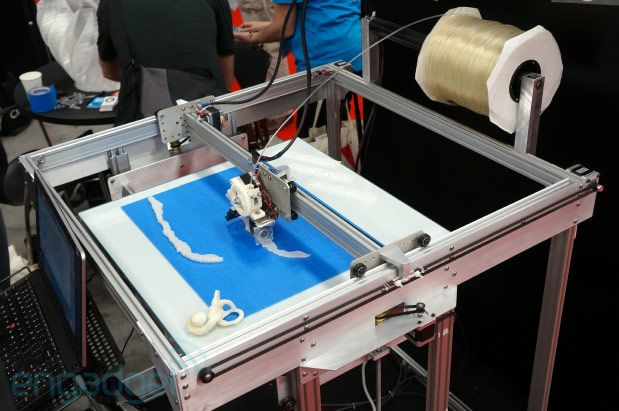 At 20% job density, it can 3D print up to 8 liters per hour – both of which are industry-leading metrics.
At 20% job density, it can 3D print up to 8 liters per hour – both of which are industry-leading metrics.
What is the relationship between 3D printing quality and speed?
3D printer speeds are directly related to the quality of the print. Depending on the printer type, the classic speed vs quality debate suggests that slower printers typically yield better results but take longer to complete a project. Or, fast printing speeds offer less detail and accuracy, but they complete projects in a much shorter time.
While this is usually a challenge, Nexa3D has solved this classic issue with its advanced LSPc-patented printers that offer high-quality speed, details, and accuracy.
What are the limiting factors for speed?
Managing heat buildup can be one of the biggest issues for some 3D printers. Other limiting factors for speed include the type of 3D printer, its settings, and the complexity of the printed model. Additionally, certain materials may need longer printing times to ensure accurate results.
Will 3D printers get faster?
With the constant technological advancements, 3D printers are likely to become even faster. It’s safe to assume that 3D printing speeds will improve as time passes.
Nexa3D is already ahead of the pack with its ultrafast 3D printers built with advanced LSPc technology. Nexa3D printers offer speed, precision, and accuracy, which makes them the leading 3D printers for builders.
Choose the Fastest 3D Printer
With so many 3D printers on the market and various speeds available, choosing the best printer for your project can be challenging. If you’re a hobbyist starting some personal projects, the FLSun QQ-S or Photon M3 Plus could be a good option.
But if you’re looking for professional, ultrafast 3D printers, Nexa3D is the solution. Nexa3D has the fastest 3D printers on the market with the largest build areas in their class — all without sacrificing part quality and while using affordable, long-lasting, and readily available components.
When 3D printing technology allows you to move from days or even weeks of prototyping and development time to hours or minutes, you can enjoy faster design cycles and quicker time to market.
Nexa3D’s ultrafast 3D printers can make your product development and manufacturing needs faster, more efficient, and cost-effective.
Want to experience it for yourself?
Get a free sample part from Nexa3D’s ultrafast 3D printers.
Or, download our free guide to the fastest 3D printing materials in 2023.
Download it here.
7 Fastest 3D Printers 2022 In Every Price Range
One of the major gripes with 3D printing is many consider it to be slow. However, over time both the speeds of FDM and resin printers have crept up — and there are now some super-fast options for both technologies.
For industrial printing, there are printers now reaching speeds competitive with traditional manufacturing, aiming to displace injection molding.
But what are the other fastest 3D printers in the world?
We have listed the world’s fastest 3D printers in every price range below, for both FDM and resin printers – but first, let’s explain the factors that affect the speed of 3D printing.
Do Bigger 3D Printers Print Faster?
A bigger resin 3D printer does indeed print faster, but this is more in the sense of being more productive. A resin printer cures an entire layer on the XY axes, regardless of size, in one go. This means that the larger the printer, the more productive the printer is.
However, this isn’t the case for FDM printers, which need to deposit filament across the entire layer before moving on to the next.
FAST FDM PICK
Flsun Super Racer200mm/s makes it one of the fastest FDM printers around
Comes 95% pre-assembled
Available at Amazon here
FAST RESIN PICK
Anycubic Photon M3 PlusSuper-fast 100mm/h speed
Larger resin build area for scalable minis prints or larger resin models
Available at Anycubic here Amazon here
SUPER-FAST PICK
Phrozen Sonic Mega 8KExtremely high-res 8K LCD screen
Enormous build area and 70mm/h speed
Available At Phrozen here Amazon here
How Fast is a 3D Printer?
As for the technologies and 3D printers we have now, simply stating the fastest possible 3D printing speeds is difficult.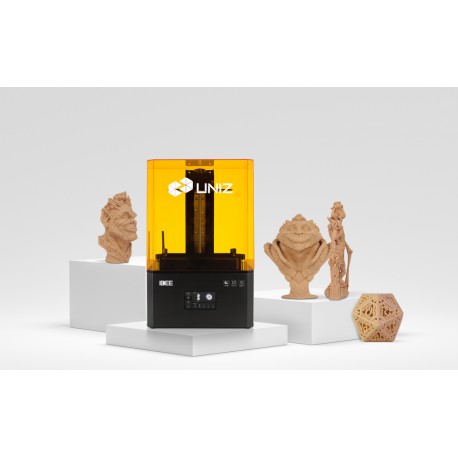
That’s because – and I know it’s frustrating to read this – it depends on several factors:
Resolution of the 3D printed part: before you start printing, you need to slice your model into layers on a 3D slicer. The more layers, and the thinner each layer, the longer the part will take to print at the same speed. A part printed with 50-micron layers will have twice as many layers as the same part printed with 100-micron layers, and take twice as long at the same speed.
- We also have a guide to high resolution 3D printers.
Quality of print: theoretically you could run a budget 3D printer at an extremely high speed, and it would still print. But the results wouldn’t be anything like how it looked on your slicer. It would be a mess of filament hairs and blobs, because the speed settings were set too fast. Some 3D printers can handle high-speed 3D printing, some cannot.
3D printing technology: how fast a 3D printer prints depends on the technology.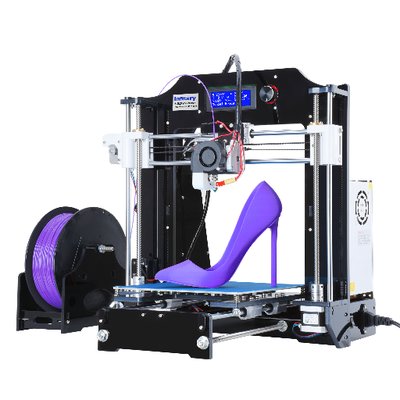 Resin 3D printers are significantly faster than FDM 3D printers as they can cure entire layers at once, rather than depositing filament over each part of the layer. The fastest 3D printing technologies include Multi Jet Fusion and resin 3D printing technologies like MSLA.
Resin 3D printers are significantly faster than FDM 3D printers as they can cure entire layers at once, rather than depositing filament over each part of the layer. The fastest 3D printing technologies include Multi Jet Fusion and resin 3D printing technologies like MSLA.
Material: some materials are easier to print than others, putting less demand on the printer and leading to a slightly faster print.
Complexity of the model: You will be able to print a cube block far quicker than an intricate 3D printed jewelry piece. This is because you can print larger layers and at a faster print speed without a notable loss of quality, since the cube is a very simple shape with no details.
Size of print: fairly obvious, but a larger print will take far longer than a small one. A full-size vase will take around 12 hours to print in normal detail on most FDM 3D printers, but a small statue may take under an hour.
Nozzle size: for FDM 3D printing, smaller nozzles mean more intricate details can be printed more accurately, but larger nozzles can potentially print faster.
Will 3D printers get faster?
Almost certainly. We’ve already seen a number of major innovations that make 3D printers faster in the last decade. In 2012, the first delta 3D printers started to appear, which print significantly faster than previous Cartesian 3D printers.
Then, new resin 3D printer innovations such as Carbon 3D’s CLIP, and Uniz’s UDP technologies made SLA and DLP faster. Other significant speed innovations include HP’s Multi Jet Fusion technology, and also the huge advances being made in many metal 3D printers such as those by Desktop Metal and Markforged.
The Fastest 3D printers 2022 in Every Price Range
| Name and brand | Build volume (mm) | Max speed | Price | Where to buy |
|---|---|---|---|---|
| Flsun Super Racer | 260 x 260 x 330 | 200mm/s | $499 | Amazon here |
| Anycubic Photon M3 Plus | 197 x 122 x 245 | 100mm/h | $699 | Anycubic here |
| Anycubic Photon M3 Max | 298 x 164 x 300 | 60mm/h | $1099 | Anycubic here |
| Phrozen Sonic Mega 8K | 330 x 185 x 400 | 70mm/h | $2199 | Phrozen here |
| Uniz Slash UDP | 293 x 122 x 200 | 600mm/h | $1,999 | Matterhackers here |
| WASP 2040 Pro Turbo | 200 x 200 x 400 | 500mm/s | $3,400 | Amazon here |
| HP Jet Fusion 5200 | 380 x 284 x 380 | 4115cm3/h | Quote |
3DSourced is reader-supported.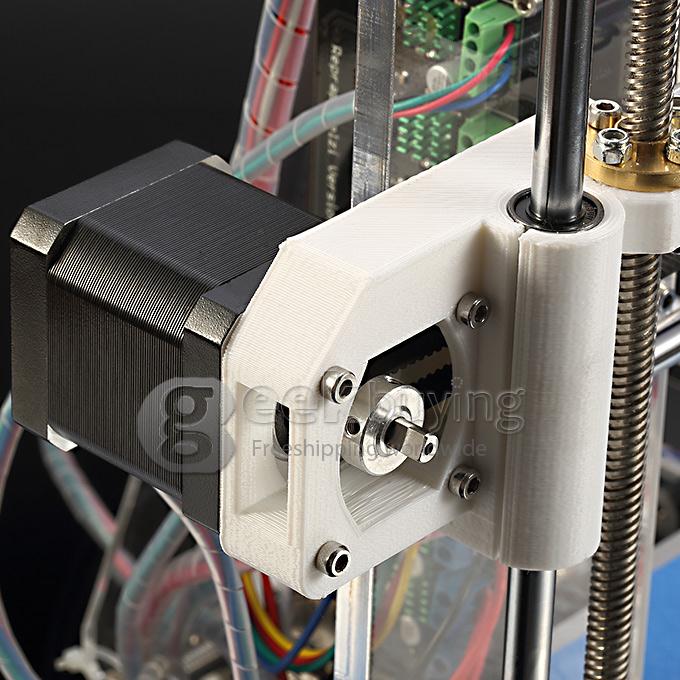 When you buy through links on our site, we may earn an affiliate commission. Learn more
When you buy through links on our site, we may earn an affiliate commission. Learn more
Flsun Super Racer – Fastest FDM 3D Printer Under $500
- Price — Check latest price at Amazon here
- Technology: FDM Delta
- Max Print Speed: 200 mm/h
- Build Volume: 260 x 260 x 330 mm
True to its speedy name, the Flsun Super Racer is a Delta FDM printer that absolutely gallops with a top print speed of 200 mm/h. It’s an upgraded version of Flsun’s QQ-S, which after some one-on-one time we found to be a competent, worthwhile printer for large projects.
Delta printers are known for offering higher speeds than their Cartesian brothers, but Flsun is pushing the boat out to new extremes with the Super Racer. Most standard FDM printers perform best at a comfortable 50-60 mm/h, while the Super Racer delivers solid quality prints at four times that.
With a decently-sized 260 x 260 x 330 mm build volume, the Super Racer is also big on vertical print capacity, ideal for those towering prints that exceed the dimensions of budget FDM printers. Throw in a thoughtful design, quality components, automatic bed leveling, breezy 20-minute assembly, a responsive, easy-to-navigate detachable touch screen, and the Super Racer comes awfully close to a speed freak’s dream 3D printer.
Throw in a thoughtful design, quality components, automatic bed leveling, breezy 20-minute assembly, a responsive, easy-to-navigate detachable touch screen, and the Super Racer comes awfully close to a speed freak’s dream 3D printer.
Now, all this speed does come with a trade-off. Delta printers, the Flsun Super Racer included, lack the accuracy and consistent print quality offered by Cartesian 3D printers. The difference is relatively negligible, but it’s a point to consider before buying for makers that favor quality over speed.
On the filament front, the Flsun Super Racer’s Bowden extruder setup works great for PLA but coughs up the usual Bowden-related jamming and clogging issues with flexibles. For example, if you’re working with TPU, you’re better off sticking to a classic Cartesian printer – ideally with a direct drive extruder.
Anycubic Photon M3 Plus/Max – Fastest Resin 3D Printers Under $1,000
- Price: $699 / $1,099 — M3 Plus Available here / M3 Max Available here
- Technology: MSLA Resin
- Max Print Speed: 100 mm/h / 60 mm/h
- Build Volume: 197 x 122 x 245 mm / 298 x 164 x 300 mm
More than simply an update to the long-running Photon series, the Anycubic Photon M3 machines are turning more than a few heads as the fastest resin 3D printer range around.
In particular, the Anycubic Photon M3 Plus proposes a top print speed of 100 mm/h. The beauty of resin printers is that they cure in layers, regardless of how much space on the build plate that layer takes. Those 100 mm/h apply whether you’re printing a single small miniature or a batch of twelve, which makes the Anycubic Photon M3 Plus exponentially more productive.
The Anycubic Photon M3 Max is no slouch either, offering a respectable 60 mm/h, but does this across a massive 298 x 164 x 300 mm. That’s the largest of any Anycubic resin printer and among the highest capacities found on consumer-grade printers, rubbing shoulders with the hulking Elegoo Jupiter and Phrozen Sonic Mega 8K.
Elsewhere, the Photon M3 duo stands out for offering excellent detail with 34 microns XY resolution on the Plus and 46 microns on the Max. The Max has a 7K LCD, one of the highest pixel counts on the market, while the Plus pushes a 6K LCD – higher than the standard 4K found on comparable printers. Both machines also ship with Anycubic excellent textured checkerboard build plate, which offers superb print adhesion.
Both machines also ship with Anycubic excellent textured checkerboard build plate, which offers superb print adhesion.
Read the full comparison: Anycubic Photon M3 vs M3 Plus vs M3 Max
Phrozen Sonic Mega 8K – Fastest High-Quality Resin 3D Printer
- Price: $2,199 — Available at Phrozen official here
- Technology: MSLA Resin
- Max Print Speed: 70 mm/h
- Build Volume: 330 x 185 x 400 mm
With the Phrozen Sonic Mega 8K, size and speed combine into arguably one of the most impressive mid-range professional resin printers on the market.
The 330 x 185 x 400 mm build volume is the largest available in this price range, and the Sonic Mega 8K darts across this printing expanse at a nippy 70 mm/h. No other printers manage to weave in such a large build volume with such high speeds; it’s always been one or the other.
The Phrozen Sonic Mega 8K allows makers to hone in on all the fine features and intricacies of even the most detailed models and minis thanks to a 43-micron resolution, propped up by a pixel-rich 15’’ 8K LCD.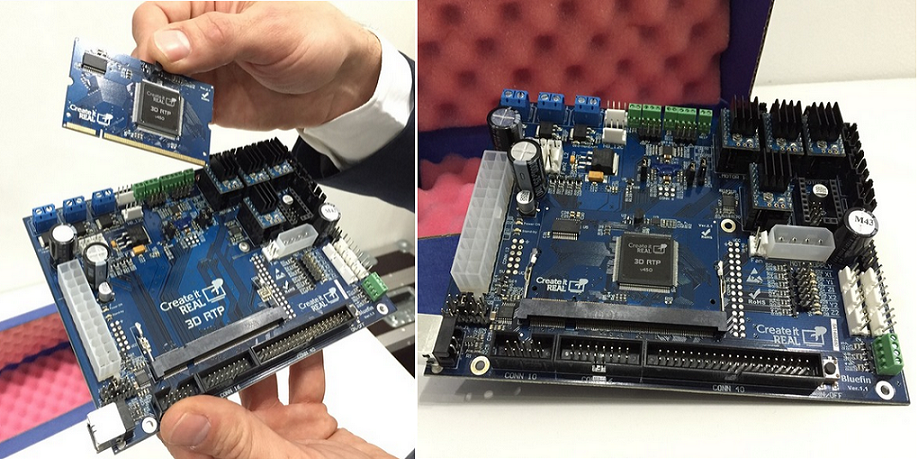 It’s a level of quality that simply isn’t currently available on any other printer in the same printer segment.
It’s a level of quality that simply isn’t currently available on any other printer in the same printer segment.
The build plate comes pre-calibrated, allowing you to print without delay once the Mega 8K lands on your doorstep. A clever dual linear rail design ensures the printer behaves and delivers those sharp details even high up into the upper reaches of the build area.
If you need a mammoth-format printer at a reasonable price to power a small business where time is of the essence, there’s little else out there that comes close to the Phrozen Sonic Mega 8K. If the build volume exceeds what you’ll conceivably ever need, a lower-cost resin printer such as the Anycubic Photon M3 Plus or even the standard M3 is likely a better use of your money. The Phrozen Sonic Mega 8K is a jumbo printer and will be far too much for most amateur makers.
Uniz Slash Plus UDP — Fastest desktop 3D printer
- Max print volume: 293 x 122 x 200 mm
- Price: $1,999 — Available on Matterhackers here
- Fastest 3D printer speed: 600mm/hour in UDP mode
Uniz have made a big impact since their original Kickstarter campaign that raised over $500,000 to produce super-fast resin 3D printers at consumer prices.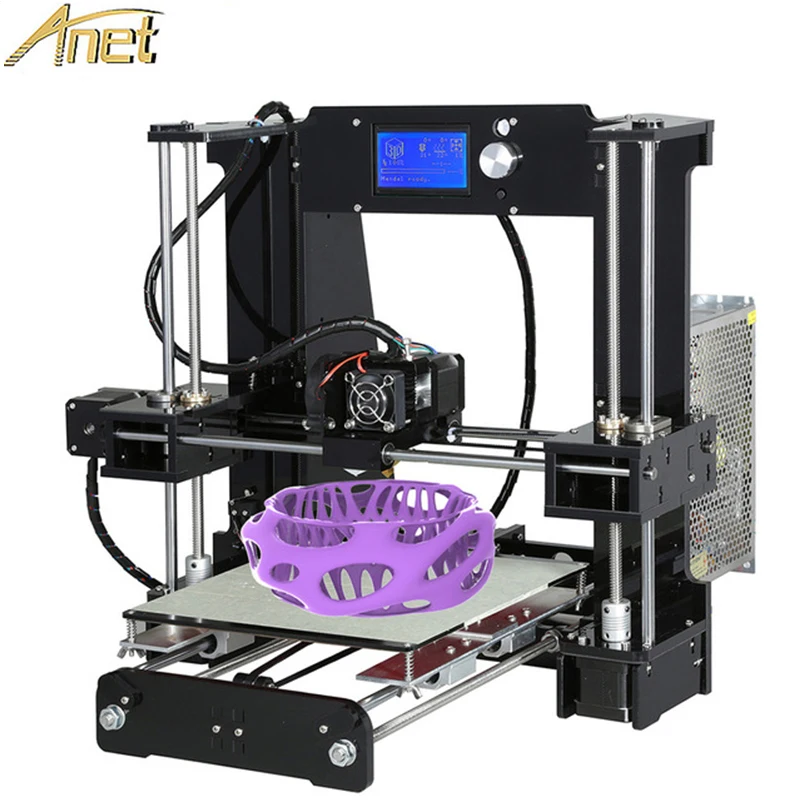 This quick 3D printer uses Uniz’s Uni-Directional Peel (UDP) technology to print far faster than its competitors, at up to 600mm/hour when in UDP mode.
This quick 3D printer uses Uniz’s Uni-Directional Peel (UDP) technology to print far faster than its competitors, at up to 600mm/hour when in UDP mode.
When not in UDP mode the maximum 3D printer speed is 200mm/hour, but this is still super fast. This is because not all parts are compatible, for example, any parts with cross sections, or fully enclosed parts cannot be printed in UDP mode; and no parts with solid infill can be printed either. You are also restricted as very tall prints cannot be printed in UDP mode, but if your part qualifies then you can print extremely quickly!
Not only is it an extremely fast 3D printer, but it’s also accurate. This SLA 3D printer has an XY resolution of 75 microns, and a minimum layer of thickness of just 10 microns. As a result, parts have very good surface finish and look almost like they have no layers at all. The printer can also calibrate itself, can be operated via your phone or table on the mobile app, and weighs just 12kg. It’s certainly one of the best speedy 3D printers for the price.
WASP 2040 PRO Turbo — Fastest 3D printer in the world
- Price: $3,400 — Available on Amazon here
- Max print volume: 200 x 200 x 400 mm
- Fastest 3D printer speed: 500mm/s recommend (some say it can print even faster!)
Delta 3D printers are known for their speed, and are the fastest FDM 3D printers in the world. The WASP 2040 PRO Turbo is a delta printer that is not only incredibly fast – at up to a recommend 500mm/s – but is also extremely accurate for an FDM printer. The resolution of up to 50 microns means very accurate and low cost prototypes and parts can be produced, and in record time. WASP claim they make the fastest 3D printers in the world for FDM.
WASP 3D printers are known for their reliability, with the Italian company ensuring the printers operate with workhorse-like consistency. It can print 3D printer filaments including ABS, PLA, PETG and Nylon, so if you want to print stronger parts from one of the tougher plastics you still can, and you can use third party filaments if you prefer – the WASP allows for these. and you can choose to buy the WASP 2040 as either a single or dual extruder 3D printer.
and you can choose to buy the WASP 2040 as either a single or dual extruder 3D printer.
Unlike most RepRap 3D printer deltas, the WASP 2040 Turbo comes fully assembled, so those who aren’t masters of DIY do not need to worry. You can also choose to order it either as a single or dual extruder 3D printer based on your printing needs.
It’s the world’s fastest 3D printer for FDM, and also accurate and reliable – what more could you want for under $5,000!
- It also has a variation designed specifically as a clay 3D printer.
HP 3D Jet Fusion 5200 — Fastest Industrial 3D printer
- Price: Requires a quote
- Max print volume: 380 x 284 x 380 mm
- Fastest 3D printer speed: 4115cm3/hour
HP have only been actively involved in the 3D printing industry for the last few years, but have brought such technological advantages in that short space of time. The Jet Fusion 5200 epitomizes this, marking uncharted territory for 3D printing where it is now considered viable for mid-range production.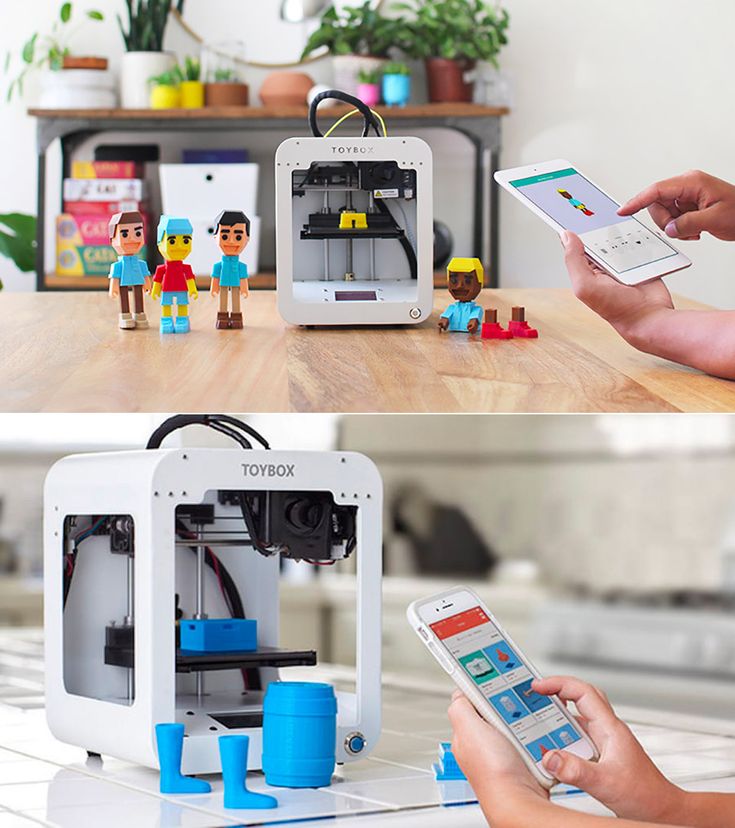
Multi Jet Fusion has always been known for its fast 3D printing speed, but the Jet Fusion is even faster than its predecessors. With speeds up to 4115cm3/hour, it’s faster than the Jet Fusion 4200 (4000cm3) and the 3200 (2800cm3) – and these were already some of the fastest 3D printers in the world. The high-quality 1200dpi print head resolution allows for extremely accurate parts with smooth surface finishes and crisp, sharp edges.
The Jet Fusion 5200 combines this astonishing speed with low part cost and scalability. Whole layers can be printed at once, rather than tracing each layer as with Selective Laser Sintering, meaning multiple parts can be printed at once without a drop off in productivity. Multi Jet Fusion isn’t known for its versatility of materials, but PA12, PA11 Nylons and TPU are strong materials with good properties for a variety of industries. It’s extremely fast, extraordinarily accurate, and a rare example of 3D printers being competitive in mid-volume part production – very exciting.
Do you really need a fast 3D printer?
Speed is always useful; nobody chooses to wait in a queue longer than they need to. However, with the quickest 3D printers, there are some cases where you can’t take advantage of this speed.
For FDM 3D printers, some materials become volatile and print with imperfections if you don’t slow right down, like PEEK, PC, and others. Printing at 150mm/s+ would just ruin your prints, so the speed is useless here.
Also, if you are printing a very simple object like a cube, speed becomes less useful as you can just use very large layer heights and print quickly anyway.
However, if your business depends on quick production, then absolutely go for a printer that can either print objects very quickly, or multiple objects simultaneously. The ability to rapidly prototype new designs and innovate quicker is invaluable, and other industries like 3D printed jewelry production or hearing aids need to be able to print custom designs at the highest speeds possible.
So, it depends. For hobbyists, speed is great for quality of life and printing all the cool things and useful 3D prints you can. For industry it can be more necessary, and businesses often opt for an industrial 3D printer than can meet their production speed requirements.
How Fast Can PLA Be 3D Printed?
The fastest FDM printers, such as the Flsun Super Racer, can print PLA up to 200 mm/h. However, the most common 3D printers, such as the Ender 3, can print PLA at around 50 to 80 mm/h without sacrificing print quality.
Related articles:
- Best large resin 3D printers (bigger = faster!)
- Best delta FDM 3D printers
- Best FDM 3D printers
Fastest SLA 3D Printer - SLASH 3D Printer
Description
Fastest 3D Printer
The SLASH 3D printer is a novelty that has shaken up the 3D printing market. What is special about this device? Quite simply, this is the fastest SLA 3D printer available today. Let's list its features:
Let's list its features:
High speed printing . Just imagine, this desktop 3D printer allows you to create products at a speed of up to 200 mm/hour;
High print precision . The fastest 3D printer SLASH did not let us down with the accuracy of 3D printing. The minimum available layer thickness is 10 microns, which not all professional devices can boast of;
Large plot area . This 3D printer is also distinguished by a large build area for equipment of its class - as much as 192x120x200 mm. This is not just enough, it is more than enough even for non-standard tasks;
Powerful software . Specialized software turns the fastest 3D printer into one of the most functional 3D printers due to numerous flexible 3D printing settings;
Large selection of materials available . Manufacturers have developed a range of specialized photopolymers to work with the fastest 3D printers. With them, each user will be able to realize any ideas.
With them, each user will be able to realize any ideas.
SLASH 9 3D printer0003
SLASH 3D printers are a revolutionary development of UNIZ in the field of 3D printing, which uses stereolithography technology to build objects from photopolymer resin. As a polymerization factor, the printer uses light from the LED array and the LCD module that forms the layer mask. Incredible print speed in the printers of this series became possible due to the implementation by the company's engineers of a unique cooling system for the print area. The construction zone is cooled using a special liquid module - a heat exchanger. To fully exploit the unique capabilities of SLASH and SLAH+ printers, UNIZ has developed a series of unified photopolymer formulations. The SLASH model, thanks to its patented technological innovations, has reduced the cost of printing equipment to the level of 3D printers using FDM technology, and even surpassed them in terms of the speed of building objects.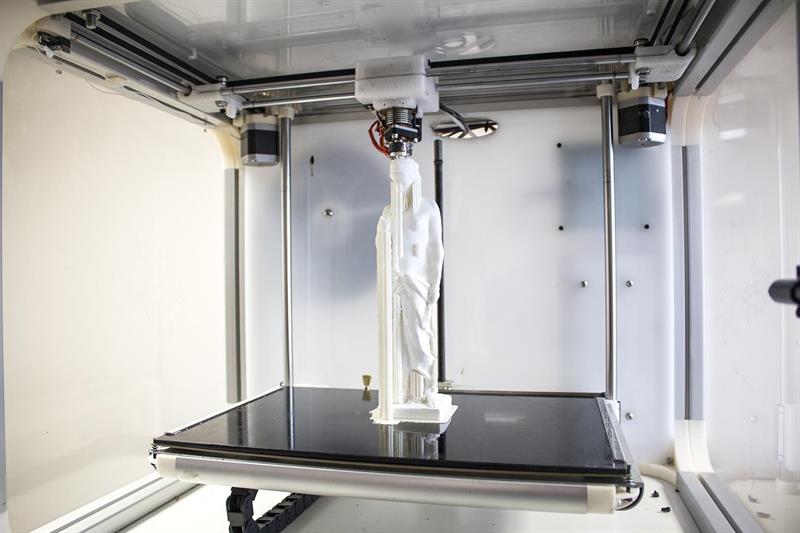
Features:
- The relatively low price of this series of printers is comparable to FDM printing equipment.
- The use of a unique combination of LED array and LCD module provides a faster build speed than FDM printers and the quality inherent in stereolithography.
- Unique resin cartridge system for economical resin usage and easy storage.
- Steel-reinforced frame to ensure the build area is dimensionally stable and prevents the device from deforming, which could affect print quality.
SLASH 3D printer
Specifications
| 3D printing technology | LCD Stereolithography |
| Construction area | 192 x 120 x 200 mm |
| XY Resolution | 75 micron, WQXGA [2560 × 1600] |
| Precision | 50 micron |
| Layer thickness (Z-axis) | 10, 25, 50, 75, 100, 150, 200, 300 micron (adjustable) |
| 3D printing speed | Up to 200 mm/h Up to 1000 cm 3 /h |
| Resin level control | Automatic |
| Assembly | Fully enclosed body, adjustable build platform |
| Optical system | Blue LED array (5000 Lux blue LED array) Liquid cooling |
| 3D printer bath cover | Original polymer coating, up to 100 times stronger than PDMS |
| Operating temperature | 18-28°C |
| Interface | USB, WiFi, Ethernet |
| System requirements | Windows 7 sp1 or higher (64-bit only), Mac OS X 10.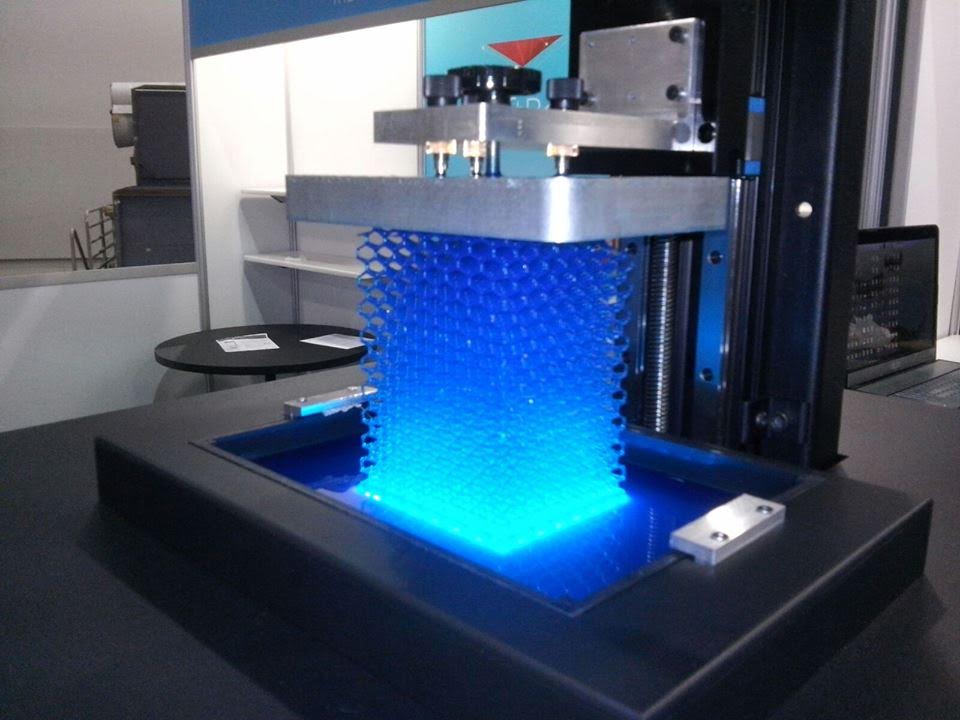 7 or higher (64-bit only), 2 GB RAM, OpenGL 2.1 7 or higher (64-bit only), 2 GB RAM, OpenGL 2.1 |
| Compatible formats | STL, OBJ, UNIZ |
| Compatible systems | iPhone, iPad, Android phone |
| Power supply | 100-240V, 3A @ 50/60Hz, 240W |
| Dimensions | 350 x 400 x 530 mm |
| Weight | 12 kg |
| Warranty | 1 year |
Back Home
Rocket 1 is the world's fastest resin 3D printer
HITRY is a high-tech company founded in 2014 that integrates 3D printing product development, maintenance, processing services and equipment sales .
For years, HITRY has striven to increase print speed without sacrificing resolution or accuracy. These efforts culminate in Rocket 1's patented Digital Continuous Liquid Forming (DCLF) technology. This revolutionary new technology delivers superior prints with incredible detail at an affordable price. The basis of DCLF technology is the dead zone. The dead zone is the thin liquid interface of the uncured resin between the oxygen and the curing zone. The light passes through the dead zone and turns the resin below it into a hard part. During the curing process, the resin continues to flow onto the curable part, maintaining a constant liquid layer, hence the curable part is less prone to sinking.
This revolutionary new technology delivers superior prints with incredible detail at an affordable price. The basis of DCLF technology is the dead zone. The dead zone is the thin liquid interface of the uncured resin between the oxygen and the curing zone. The light passes through the dead zone and turns the resin below it into a hard part. During the curing process, the resin continues to flow onto the curable part, maintaining a constant liquid layer, hence the curable part is less prone to sinking.
The world's fastest consumer resin 3D printer, the Rocket 1, can print at 380mm/hr. Rocket 1 is not only fast, but also prints with outstanding accuracy. With 0.035mm XY resolution and 0.001mm Z resolution, Rocket 1 prints every pixel quickly and accurately, leaving surfaces exceptionally smooth and perfect.
Rocket 1 can print complex pattern structures with 0.2mm internal pores and a smooth surface through which liquids and gases can freely flow.
Rocket 1 projects light from the top of the device down onto the surface of the resin and cures it so no replacement screen or removable films are required. This means less waste and less energy consumption. This 3D printer is industrial quality, durable, reliable and stable with an expected lifespan of over 18,000 hours.
This means less waste and less energy consumption. This 3D printer is industrial quality, durable, reliable and stable with an expected lifespan of over 18,000 hours.
Rocket 1 Resin Reservoir holds 3.7 kg of resin and can hold large models. However, you don't have to worry about resin loss. HITRY has developed a resin-insoluble filling liquid that is non-toxic, reusable and inexpensive. With this tank filling liquid, you can finish your print with only 300g of resin left.
Rocket 1 currently offers 8 different types of resins, giving you more options for different applications. The nanomaterials in HITRY resins cause the resin to flow into the dead zone and level out quickly, greatly reducing print times.
Another key feature of the Rocket 1 is top-down printing. Unlike bottom-up printing, top-down printing immerses the curing model in resin instead of pulling it up to avoid the effects of gravity and peel forces. Rocket 1's top-down print design ensures models print with little or no support, saving a lot of time in post-processing.